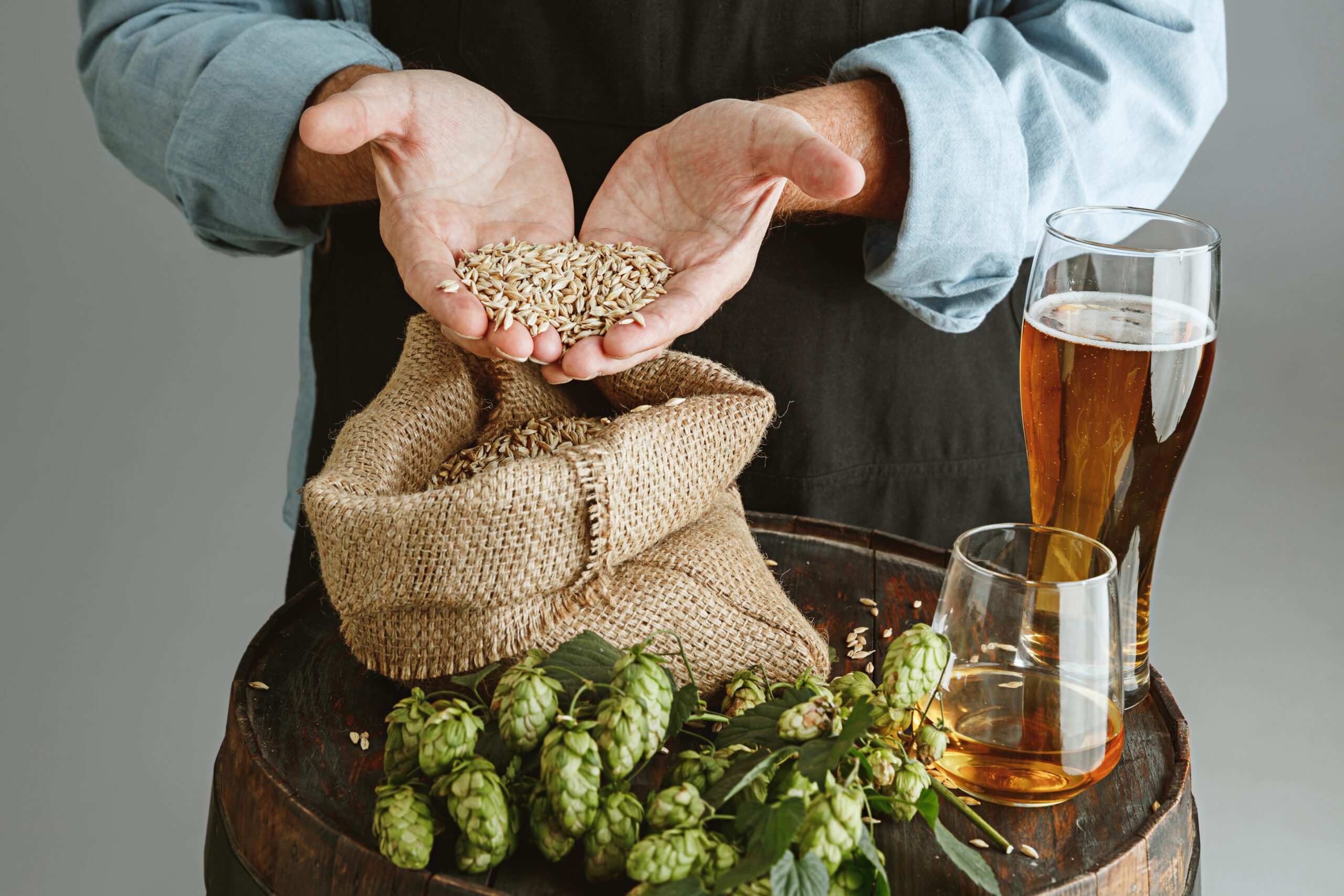
Affordable Ways to Explore Home Brewing as a Hobby
Are you aching to dive into the world of home brewing but worried about the costs? Don’t worry since you can cut costs with right approach! There are plenty of affordable ways to start on this delightful journey of crafting your own brews. Home beer brewing can be a satisfying and cost-effective hobby, allowing you to experiment with flavors and brews while savoring the joy of creating something from scratch. In this article, we will uncover the most affordable ways to explore home brewing as a hobby, and you can jump in without breaking the bank.
Brewing on a Budget
Home brewing is a captivating hobby, but like any hobby, it can quickly become an expensive proposition before you smell the hops if you’re not careful. Fortunately, there are clever ways to pursue your brewing passion without emptying your pockets. Let’s delve into some practical strategies for brewing on a budget.
1. Start with the Basics
When you’re just getting started with home brewing, it’s tempting to invest in an array of shiny gadgets and gizmos. However, it’s crucial to resist that urge. Instead, focus on the essentials. Most beginner home brewing kits come with everything you need to get started, such as fermenters, airlocks, and siphons. These kits are reasonably priced and provide a fantastic entry point into the world of brewing.
Quote from an Experienced Brewer: “My brewing journey began with a simple kit. It was a cost-effective way to experiment and develop my skills. Starting with the basics helps you build a strong foundation.”
2. DIY Equipment
One of the most rewarding aspects of home brewing is the opportunity to get creative. Crafty brewers often find innovative ways to save on equipment costs by crafting their gear. For example, instead of splurging on an expensive wort chiller, you can create one using a few feet of copper tubing and some hose fittings. DIY equipment projects not only save money but also give you a deeper understanding of the brewing process.
Quote from an Experienced Brewer: “Making your equipment can be immensely satisfying. It’s like a rite of passage for home brewers. Plus, it’s a significant cost-saver.”
3. Buy in Bulk
If you’re looking to keep costs down in the long run, consider buying your brewing ingredients in bulk. Ingredients like malt, hops, and yeast can often be purchased in larger quantities at a lower cost per unit. This approach allows you to experiment with various recipes without the worry of running out of essential ingredients.
When you buy in bulk, it’s crucial to store your ingredients properly to maintain their freshness. Keep hops in airtight bags in the freezer, malt in a cool, dry place, and yeast in the refrigerator. Proper storage ensures that your ingredients remain usable for an extended period.
4. Grow Your Own Hops
Hops are a fundamental ingredient in brewing, and they can be a significant expense. If you have a bit of gardening space, consider growing your hops. This not only reduces your brewing costs but also adds a personal touch to your brews. Homegrown hops can impart unique flavors and aromas to your creations, making them truly one-of-a-kind.
Quote from an Experienced Brewer: “Watching your hops grow and harvesting them for your brews is a special feeling. It’s like nurturing a piece of your beer’s soul. Plus, it’s a budget-friendly option.”
5. Reuse and Recycle
Sustainability is a buzzword in many circles, and home brewing can certainly be a part of that movement. Consider reusing your yeast and equipment whenever possible. When you brew a batch of beer, yeast sediment settles at the bottom of your fermenter. You can harvest and reuse this yeast for subsequent batches. It’s both economical and environmentally friendly.
Reusing equipment, such as bottles and caps, is also a great way to cut costs. Just ensure that everything is cleaned and sanitized thoroughly before each use to maintain the quality of your brews.
Quote from an Experienced Brewer: “Reusing yeast and equipment is not only eco-friendly but wallet-friendly too. It’s incredible how a little effort can go a long way.”
Thrifty Brewing Techniques
In the world of home brewing, being thrifty doesn’t mean cutting corners on quality or sacrificing flavor. It’s about finding clever ways to save money while still producing fantastic brews. Let’s explore some thrifty brewing techniques that will help you get the most out of your brewing experience without breaking the bank.
1. Extract Brewing for DIY Brewing beginners
For DIY brewing beginners and budget-conscious brewers, extract brewing is a fantastic way to start. Unlike all-grain brewing, which can require more equipment and ingredients, extract brewing simplifies the process. It involves using malt extract, which is pre-made malt sugar. This eliminates the need for mashing and boiling grains, making it a more straightforward and cost-effective method.
Most homebrew supply stores offer a wide variety of malt extracts, allowing you to experiment with different flavors. Additionally, extract brewing requires fewer ingredients and equipment, making it a budget-friendly choice for those just starting their brewing journey.
Quote from an Experienced Brewer: “Extract brewing is like the gateway to home brewing. It’s affordable, less complicated, and allows DIY brewing beginners to focus on mastering the brewing process.”
2. Recycle and Reuse
Thrifty brewing techniques often involve reducing waste and making the most of what you have. One way to do this is by reusing yeast. After each fermentation, yeast sediment settles at the bottom of your fermenter. You can harvest and reuse this yeast for subsequent batches, which not only saves you money but also ensures a consistent yeast strain for your brews.
Reusing equipment is another cost-saving approach. Bottles, caps, and even some brewing equipment can be sanitized and used for multiple batches. Just be diligent about cleaning and sanitizing to maintain the quality of your beer.
Quote from an Experienced Brewer: “Reusing yeast and equipment is a thrifty brewer’s secret weapon. It’s cost-effective and eco-friendly, and it doesn’t compromise the quality of your beer.”
3. Reduce Energy Costs
Home brewing involves heating and cooling processes, which can contribute to energy bills. To be thrifty, consider ways to reduce energy consumption. When boiling wort, use a lid on your pot to minimize heat loss and save on gas or electricity. During fermentation, find a cool, stable spot in your home to avoid unnecessary temperature control expenses.
Using energy-efficient appliances, like LED lighting, can also make a difference in the long run. Lowering your energy costs while brewing not only benefits your wallet but also the environment.
4. Learn the Art of Blending
Sometimes, achieving the perfect flavor doesn’t require expensive ingredients. Learning the art of blending allows you to mix and match different brews to create a unique flavor profile. By blending various batches or experimenting with different hops and malts, you can achieve complexity and depth in your beer without breaking the bank.
Quote from an Experienced Brewer: “Blending is a thrifty brewer’s craft. It’s like being a mad scientist in your own laboratory, creating brews that surprise and delight without spending a fortune.”
5. DIY Labels and Packaging
While not directly related to the brewing process, creating your labels and packaging can be a fun and budget-friendly aspect of home brewing. Designing your labels and repurposing bottles for your brews adds a personal touch to your creations. It’s a creative outlet that doesn’t cost much and can even make for fantastic gifts.
Thrifty brewers often find joy in crafting unique labels and packaging, which can be a conversation starter and add value to their brews.
Quote from an Experienced Brewer: “Creating your labels and packaging gives your beer a personal touch. It’s like adding the finishing strokes to a work of art, and it’s incredibly budget-friendly.”
Learning Resources
In the ever-evolving world of home brewing, continuous learning is essential to improving your skills and creating exceptional brews. Fortunately, there are a plethora of resources available to enthusiasts of all levels. Let’s explore the various learning resources that can help you embark on your home brewing journey and take your passion to the next level.
1. Online Forums and Communities
The internet is a treasure trove of knowledge for home brewers. Online forums and communities dedicated to brewing are vibrant spaces where experienced brewers and novices alike gather to share their insights, ask questions, and offer support. For more information and support, you can visit websites like HomeBrewTalk, Reddit’s Homebrewing community, and the American Homebrewers Association forum. These platforms offer valuable insights, discussions, and a sense of community among brewers.
These platforms cover a wide range of topics, from basic brewing techniques to advanced recipes. You can interact with seasoned brewers, ask for advice, and even troubleshoot issues you encounter during the brewing process. It’s like having a virtual mentor at your fingertips.
Quote from an Experienced Brewer: “Online brewing communities are invaluable. I’ve learned so much from fellow brewers, and their advice has often been a game-changer for my brews.”
2. YouTube Tutorials
Visual learners will find a wealth of home brewing tutorials on YouTube. Many experienced brewers and brewing channels create step-by-step videos that walk you through the entire brewing process. These videos are not only informative but also visually engaging, making it easier to grasp various techniques.
From DIY brewing beginners’ guides to specific brewing styles and equipment reviews, YouTube offers a diverse range of content for every level of brewer. You can watch and learn at your own pace, making it an excellent resource for those who prefer to see things in action.
Quote from an Experienced Brewer: “YouTube tutorials are like having a personal brewing instructor. I’ve picked up numerous tricks and hacks from these videos that have improved my brewing.”
3. Blogs and Websites
Numerous blogs and websites are dedicated to the art and science of home brewing. These platforms provide in-depth articles, guides, and recipes that cover various aspects of the brewing process. Websites like The Homebrewer’s Association, Brewer’s Friend, and Brew Cabin offer a wealth of resources.
From understanding the intricacies of yeast propagation to perfecting your hop additions, these online resources can turn you into a well-informed and skilled brewer. They often feature articles written by experts, offering a deep dive into specific brewing topics.
Quote from an Experienced Brewer: “Blogs and websites are like textbooks for brewers. I regularly refer to them to enhance my knowledge and try out new recipes.”
4. Books and Literature
For those who appreciate traditional learning, brewing literature can be a valuable resource. There are numerous books on home brewing written by seasoned professionals, covering a wide range of topics. Some classic titles like “The Complete Joy of Homebrewing” by Charlie Papazian and “How to Brew” by John Palmer are considered essential reads for home brewers.
These books delve into the science of brewing, the history of beer styles, and the art of crafting the perfect beer. They offer comprehensive guidance and can serve as valuable reference materials throughout your brewing journey.
Quote from an Experienced Brewer: “Books on home brewing are like your brewing library. They provide the in-depth knowledge you need to master this craft.”
5. Homebrewing Clubs
If you prefer hands-on learning and face-to-face interaction, consider joining a local homebrewing club or association. These clubs often host regular meetings, workshops, and events where you can meet fellow brewers, share experiences, and learn from one another.
Being part of a homebrewing club provides a sense of community and camaraderie. It’s an opportunity to taste and critique each other’s brews, exchange tips, and even gain access to shared equipment. This practical learning experience can significantly enhance your brewing skills.
Quote from an Experienced Brewer: “Homebrewing clubs are like a second family for brewers. It’s where I’ve made lifelong friends and honed my skills through shared knowledge.”








